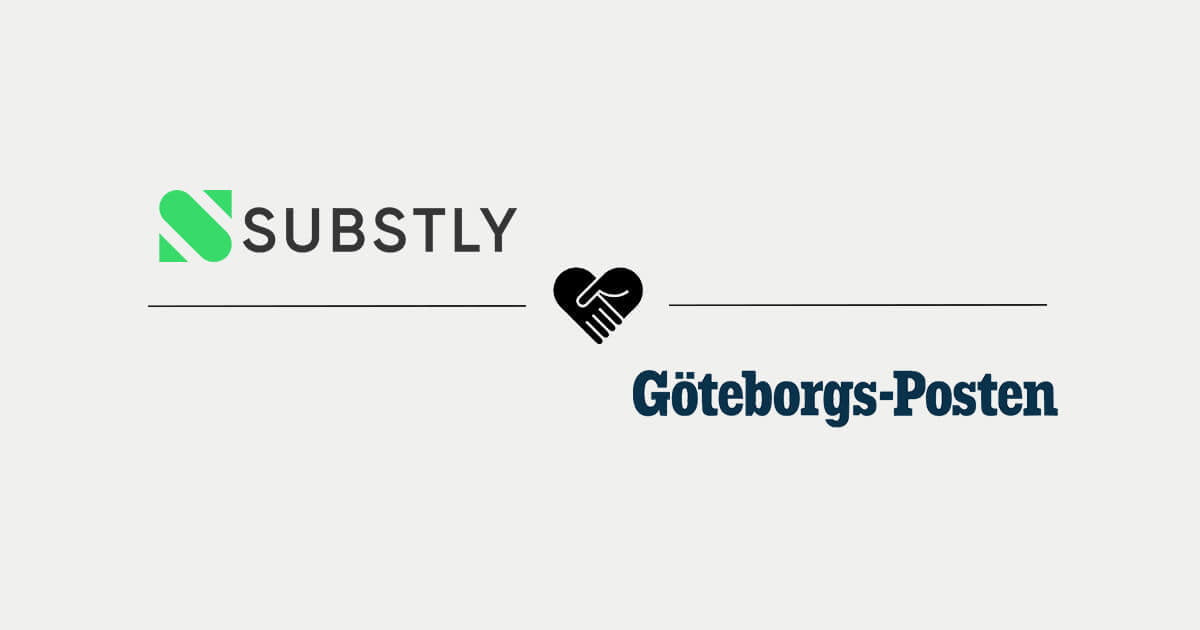Table of Contents
What is SaaS Vendor Management?
Challenges and Benefits for SMBs
When Should an SMB Approach SaaS Vendor Management
SaaS Vendor Management Best Practices for SMBs
The 6-step SaaS Vendor Management Process for SMBs
Key takeaways
- SaaS vendor management is a proactive approach that enables businesses to derive the maximum value from their SaaS investments while minimizing risks and complexities.
- By recognizing the right stage to embrace strategic vendor management, SMBs can confidently reduce costs, enhance operations, and drive growth.
- One common pitfall for SMBs is the accumulation of too many tools from various vendors. This increases costs and leads to a fragmented software stack that hinders management.
- A 6-step SaaS vendor management process for SMBs includes assessing your landscape, prioritizing tools, researching vendors, wise contract negotiation, resource allocation, and regular optimization.
In today's fast-paced business landscape, small and mid-sized businesses (SMBs) harness the power of Software-as-a-Service (SaaS) solutions to streamline operations, enhance productivity, and drive growth. However, the multitude of available SaaS applications and vendors presents a challenge—how to manage this ecosystem efficiently while maximizing its benefits. This comprehensive guide explores the art of SaaS vendor management, offering practical insights, strategies, and best practices tailored to SMBs.
What is SaaS Vendor Management?
SaaS vendor management refers to the strategic process of overseeing and optimizing the relationships, agreements, and interactions between a company and its various SaaS vendors. It involves efficiently handling the entire vendor lifecycle, from the initial SaaS vendor evaluation and selection of best vendors to price negotiation, deployment, ongoing monitoring, and even vendor offboarding if necessary.

Vendor management goes beyond the buying process. It encompasses managing multiple aspects of vendor relations, including technical support, licensing, security compliance, performance evaluation, and cost control. The goal is to ensure that the SaaS applications align with the company's objectives, contribute positively to its operations, and provide a tangible return on investment.
SaaS vendor management is a proactive approach that enables businesses to derive the maximum value from their SaaS investments while minimizing risks and complexities. It involves maintaining a clear overview of the entire software ecosystem, making informed decisions about which tools to use, negotiating favorable contract terms, and continually assessing the performance and relevance of the chosen SaaS solutions.
Effective SaaS vendor management empowers companies to streamline operations, reduce redundancy, control costs, enhance security, and stay agile in a rapidly changing business landscape. This practice becomes particularly vital for small and mid-sized companies, enabling them to compete effectively with larger enterprises by optimizing their software stack for efficiency and growth.
-%20computer%20screen%20-%20small.png?width=400&height=308&name=SaaS%20Vendor%20Management%20-%20definition%20(1)-%20computer%20screen%20-%20small.png)
Challenges and Benefits for SMBs
While the advantages of SaaS applications are evident for small and mid-sized companies, managing multiple SaaS vendors is not without its obstacles. SMBs encounter a spectrum of challenges on their journey toward effective vendor management. Operating with tighter budgets than larger enterprises, small businesses struggle to balance investing in quality SaaS tools and managing costs. This necessitates selecting tools that offer value without compromising quality to avoid overspending.
Limited Resources
Furthermore, limited IT and procurement resources can hinder SMBs' ability to research, select, and manage SaaS vendors effectively. The scarcity of dedicated personnel in these areas can lead to oversight, inadequate management practices, and missed optimization opportunities. The allure of SaaS solutions can entice SMBs to adopt multiple tools without a well-defined strategy. This can result in a fragmented tech stack featuring overlapping functionalities and increased complexity. While this fragmentation complicates management, it also negatively impacts operational efficiency.
Additionally, the intricacies of contract management can be overwhelming for small businesses without extensive legal resources. Navigating terms, negotiating agreements, and ensuring alignment with evolving needs become complex tasks. Ensuring seamless integration between various SaaS tools can be technically challenging, particularly for SMBs lacking dedicated integration expertise. Incompatibility issues may arise, hampering data flow and collaboration across different departments.
Technical Expertise & Change Management
As SMBs grow, their software requirements evolve, posing the challenge of selecting SaaS tools that can scale alongside the business without necessitating frequent migrations or changes. Such disruptive shifts can impact daily operations. Ensuring data security and compliance becomes paramount, especially for SMBs without dedicated security teams. Careful due diligence in verifying that SaaS vendors adhere to required security protocols and regulations is essential to avoid unwanted security risks.
SMBs might also lack the technical expertise needed to evaluate the performance and relevance of SaaS tools effectively over time. This can lead to the underutilization of tools, missed optimization opportunities, and an inability to harness their potential fully. Another challenge arises from vendor lock-in, where SMBs might overlook the potential for switching vendors, leading to hesitation in exploring new options even if they might be better suited to evolving needs.
Furthermore, implementing new SaaS tools across an organization requires substantial change management efforts. Adapting workflows, training employees, and addressing resistance can be time-consuming and challenging, particularly for SMBs with limited resources. However, the journey toward effective SaaS vendor management is well worth the effort.
Enhanced productivity
Embracing proper SaaS vendor management offers a host of benefits that go beyond mere cost control. By implementing best practices and effectively managing vendors, SMBs unlock remarkable advantages that positively impact every facet of their operations. One of the immediate benefits is cost efficiency—streamlining your software ecosystem, eliminating redundancies, and negotiating favorable contract terms to control spending effectively.
Aligned tools contribute directly to enhanced productivity within your organization. When your software stack is optimized to meet specific business needs, workflows become more streamlined and efficient. Employees spend less time navigating between tools and more time focusing on value-added tasks, leading to improved overall productivity.
Properly managed supplier relationships empower SMBs with the flexibility to scale their software solutions as their business grows. Instead of facing the disruption of replacing tools frequently, your optimized software ecosystem can adapt and expand seamlessly, accommodating your evolving requirements without compromising efficiency.
Regular assessments of your tools' performance ensure they continue to meet defined metrics and objectives. This optimization process ensures you invest in the best solutions and that they are actively contributing to your business goals. If a tool begins to underperform or no longer aligns with your needs, you can take proactive measures to rectify the situation.
Maintaining data security and compliance is paramount. Proper vendor management allows SMBs to prioritize vendors that adhere to stringent security protocols and compliance standards, minimizing the risk of data breaches and potential legal and reputational ramifications.
More Informed Decisions & Better User Experience
You're better equipped to make informed decisions with a clear overview of your software ecosystem. This includes evaluating tools for adoption, assessing their continued relevance, and determining when a tool no longer serves its purpose. Strategic decision-making prevents impulse purchases and contributes to a more intentional approach to your software stack.
A positive user experience is directly linked to the quality of your procurement and SaaS management processes. Well-managed vendors offer reliable support and resources to your employees. Comprehensive training, efficient troubleshooting, and accessible resources enhance the user experience, making it easier for your team to leverage the full potential of the tools at their disposal.

Contract management is a part of vendor management that provides you with control over renewals. You can avoid unnecessary expenses with proper planning and the ability to assess tool performance before renewing contracts. This control ensures that your software ecosystem remains aligned with your current needs and objectives.
You allocate your resources more efficiently by dedicating efforts to vendor management and optimization. Rather than expending time and personnel on redundant or underutilized apps, you focus your energy on strategic initiatives that directly impact your business growth.
A foundation for sustained growth
The benefits of proper SaaS vendor management contribute to your overall competitiveness in the market. Streamlined operations, enhanced productivity, and effective resource allocation position your SMB to compete more effectively against larger enterprises. As you continue to optimize your software ecosystem through proper vendor management, you establish a foundation for sustained growth. Your SaaS apps can evolve with your business needs, supporting your expansion without causing disruptions or hindering operations.
While the journey toward effective SaaS vendor management presents challenges, the strategic implementation of best practices leads to a cascade of benefits. SMBs that navigate these challenges and embrace the advantages can position themselves for growth, efficiency, and resilience in today's competitive business landscape.
When Should an SMB Approach SaaS Vendor Management
For small and mid-sized businesses, the journey toward effective SaaS vendor management is a progression that aligns with the growth and maturity of the organization. While some SMBs might initially adopt SaaS tools ad hoc, there comes a point where a strategic approach to vendor management becomes essential for maximizing benefits and mitigating challenges. Let's explore when it makes sense for an SMB to transition to a more strategic approach:
Initial Adoption Phase: Reactive Management
In the early stages, companies often focus on solving immediate challenges with SaaS apps. This phase involves ad hoc tool adoption to address specific needs, but there might be minimal coordination among tools or a long-term vendor management strategy. Reactive management suffices when the scale and complexity of the software ecosystem are relatively limited.
Growth and Diversification Phase: Emerging Need for Strategy
As the organization grows and its software ecosystem diversifies, challenges such as vendor overload, integration issues, and scalability concerns become more apparent. This is the point where a more strategic approach to vendor management becomes valuable. With multiple SaaS tools and vendors in play, adopting a proactive strategy ensures alignment with business goals and optimal tool utilization.
Alignment with Business Goals: Strategy Development
When your business starts aligning SaaS app adoption with broader business goals, it's a clear signal that strategic vendor management is necessary. As tools become integral to your operations, ensuring they align with your growth strategy and offer tangible value becomes crucial. This phase marks the beginning of more deliberate vendor selection, performance monitoring, and optimization efforts.
Increasing Complexity: Centralized Management Requirement
Managing multiple vendors manually becomes challenging as your software ecosystem evolves and complexities increase. Using tools like SaaS management platforms (SMP) or vendor management software (VMS) becomes essential for streamlined management, better insights, and effective control over contracts, renewals, and usage in a centralized approach.
Resource Allocation and Efficiency: Enhanced Strategic Approach
When resource allocation becomes a factor in your organization's efficiency, a more refined strategic approach to vendor management with clear expectations is warranted. At this stage, SMBs should allocate dedicated personnel or teams to oversee vendor relations, monitor performance, and actively seek opportunities for optimization.
Continuous Improvement: The Mature Strategy
Once a business has matured in its vendor management approach, it's actively seeking continuous improvement. Regular reviews, data-driven decisions, and the ability to pivot SaaS apps when needed are hallmarks of a mature strategy. This phase ensures that tools support current needs and evolve with the business's changing demands.
SaaS Vendor Management Best Practices for SMBs
To tackle these challenges head-on, SMBs can implement several best practices for effective SaaS vendor management. These practices serve as guiding principles, helping you optimize your software ecosystem while mitigating potential pitfalls.
The Decentralized SaaS Procurement & Centralized SaaS Management Model
Many SMBs strive to adopt a hybrid approach where some critical or company-wide SaaS tools are centralized while allowing flexibility for decentralized procurement and management in other areas. A decentralized SaaS procurement and centralized SaaS management strategy are beneficial for most SMBs.
.jpg?width=720&height=405&name=The%20Decentralized%20SaaS%20Procurement%20%26%20Centralized%20SaaS%20Management%20model%20(1).jpg)
Benefits of decentralized SaaS procurement
Decentralized procurement allows individual teams or departments to choose SaaS solutions that best fit their needs, as different teams have unique requirements and domain-specific expertise. Decentralized procurement empowers them to select tools that align with their specific workflows and industry needs without going through a centralized decision-making process. This expedites the procurement process and avoids potential bottlenecks. This flexibility leads to better adoption and satisfaction among users.
Benefits of Centralized SaaS Management
Centralized management allows for bulk purchasing of SaaS licenses, resulting in cost savings and improved budget control. It enables consistent deployment, configuration, and usage of SaaS across the organization. It promotes standardization of processes, business intelligence and data management, and security practices, which enhance efficiency and minimize risks. Centralized control ensures adherence to organizational policies, security protocols, and regulatory requirements. It enables centralized monitoring and reporting, which is essential for data protection and compliance.
Strategic Vendor Selection
Align SaaS apps with your business needs and growth goals. This involves a thorough understanding of your organization's unique requirements. By identifying areas where SaaS solutions make the most significant impact, you prioritize vendors that offer functionalities crucial to your operations. This strategic alignment ensures that the tools you invest in will contribute directly to your business objectives.
Vendor Consolidation
One common pitfall for SMBs is the accumulation of too many tools from various vendors. This increases costs and leads to a fragmented software stack that hinders integration and management. To address this, prioritize vendor consolidation. Seek out platforms that offer multiple features within a single tool in your buying process, reducing the need for numerous individual solutions. This consolidation not only simplifies management but can also result in cost savings.
Contract Negotiation
Negotiation plays a pivotal role in ensuring favorable terms when entering into contracts with SaaS vendors. Aim for contracts that offer flexibility and accommodate changes in your business needs. Transparent pricing and clear service level agreements (SLAs) are crucial to prevent unexpected expenses. Proper price negotiation safeguards your interests and helps establish a positive vendor relationship with the best vendor from the outset.
Centralized Management Tools
Managing multiple vendors and their associated contracts and licenses quickly becomes overwhelming. Investing in a centralized management tool or system can be a game-changer. SaaS management platforms and vendor management software provide a unified dashboard where you can track the number of licenses and usage, upcoming renewals, and performance metrics. This centralized approach streamlines your vendor management tasks and offers better visibility into your entire software ecosystem.
Regular Performance Reviews
Regularly assessing the performance of your tools is essential to ensure they continue to meet your business needs. Define key performance metrics based on your objectives. Are they contributing to increased efficiency, better collaboration, or enhanced customer experiences? Regular performance reviews empower you to make informed decisions about retaining or replacing tools based on their impact on your organization.
Open Communication with Vendors
Communication is at the heart of successful vendor relations. Establishing an open and collaborative channel with your vendors fosters mutual understanding and is key to a good relationship and cooperation. Regularly provide feedback on tool performance, share your evolving needs, and inquire about upcoming features or updates. A strong vendor relationship can lead to customizations that align tools more closely with your business requirements.
The 6-step SaaS Vendor Management Process for SMBs
Embarking on the journey of effective SaaS vendor management requires a structured approach that empowers businesses to optimize their software ecosystem while minimizing risks and complexities. Following these step-by-step guidelines establishes a solid foundation for successful vendor management.
1. Assess Current SaaS Landscape
Begin by conducting a comprehensive assessment of your current software ecosystem. Identify all the tools and vendors currently in use within your organization. This step provides a clear starting point for the optimization process.
2. Prioritize Critical Tools
Not all tools are equal in terms of their impact on your operations. Identify and prioritize tools that are critical to your core business functions and long-term growth. This focused approach helps you allocate resources effectively and sets clear expectations for the following steps.
3. Conduct Vendor Research
For each tool you're considering in your buying process, conduct research on potential vendors using comparison sites like Capterra, Sourceforge, or G2. Assess factors such as functionality, scalability, security compliance, pricing structures, and customer support. Create a shortlist of vendors that align closely with your criteria.
Don't rely solely on marketing materials or descriptions. Request demos or trial periods from the shortlisted vendors. Hands-on experience with the tools will provide insight into their user-friendliness, functionality, and suitability for your organization.
4. Negotiate Contracts
Once you've selected the best vendors, it's time to enter contract negotiations. Negotiate terms that align with your evolving needs and growth plans. Transparent pricing, flexibility, and well-defined service level agreements (SLAs) are key components of favorable contracts.
5. Allocate Resources and Centralize Management
Automation of SaaS management processes holds immense potential for small businesses, but vendor management requires consistent attention and ongoing management.
Assign dedicated individuals or teams to manage vendors, monitor tool performance, and optimize your software ecosystem. Primarily this would be people from your IT and finance team
Invest in a centralized management tool or system to manage multiple vendors and contracts effectively. SaaS management platforms and vendor management software offer a unified dashboard for tracking the number of licenses and usage, renewal dates, and performance metrics.
6. Regular Reviews and Optimization
Define clear performance metrics based on your business objectives. Regularly evaluate whether the tools meet these metrics and contribute to your growth strategy. Assess vendor performance, costs, alignment with your goals, and emerging alternatives. Be open to making changes and exploring new tools to maintain an optimized software stack.
If you work in a small or medium-sized business and seek a SaaS management platform with a short learning curve that is user-friendly and strengthens the cooperation between IT and Business, consider exploring Substly to see if it suits your needs.

.jpg)
.jpg?width=400&height=1000&name=The%206-step%20SaaS%20vendor%20management%20process%20for%20SMBs%20(2).jpg)
.jpg)

